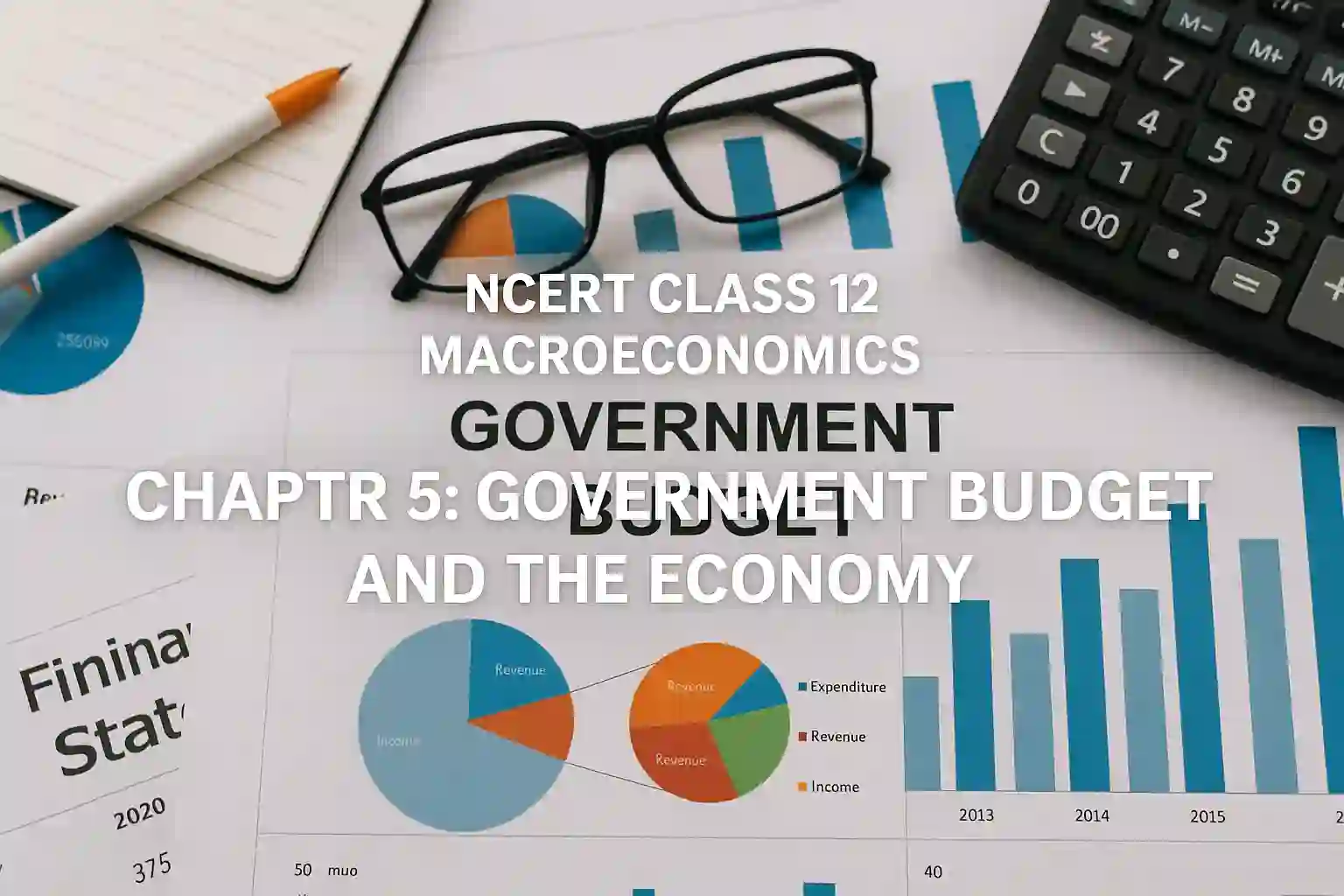Chapter 5 of NCERT Class 12 Macroeconomics is Government Budget and the Economy. This chapter helps students understand how the government plans and manages its income and spending. It explains the structure of the government budget, types of deficits, fiscal policy, and how government spending affects economic growth, inflation, and development. Through simple terms and examples, the chapter introduces you to concepts like revenue and capital expenditure, budget receipts, and the difference between fiscal deficit and revenue deficit.
I’m writing about this chapter because it’s directly connected to real government policies that we read about in newspapers every year during the Union Budget. Knowing this chapter not only helps you score in board exams, but also builds your awareness as a citizen. Many students feel lost when they hear about fiscal deficit, subsidies, or disinvestment in the news—this chapter breaks all those concepts down. Plus, many case-based and data-based questions in the CBSE Class 12 exam come from this topic. That’s why I’ve explained the key points below in simple language and also shared the direct link to download the official NCERT PDF.
What is a Government Budget?
A government budget is a statement of expected income and expenditure of the government for a financial year. It reflects how the government plans to earn and spend money to manage the country’s economy and welfare.
The budget has two major parts:
- Revenue Budget
- Capital Budget
Revenue Budget
This includes:
- Revenue Receipts – income from taxes and non-tax sources
- Revenue Expenditure – day-to-day expenses like salaries, pensions, interest payments, etc.
Capital Budget
This includes:
- Capital Receipts – money from borrowings, disinvestment, recovery of loans
- Capital Expenditure – investment in infrastructure, loans to states, buying assets
Objectives of Government Budget
The government uses the budget as a tool to:
- Ensure economic growth
- Reduce inequality through subsidies and welfare schemes
- Create employment
- Maintain economic stability
- Allocate resources to important sectors like education and health
Download NCERT Class 12 Macroeconomics Chapter 5 PDF
You can download the official NCERT Class 12 Macroeconomics PDF of Chapter 5: Government Budget and the Economy directly from this website. This version is free, updated and fully aligned with the latest CBSE syllabus.



















